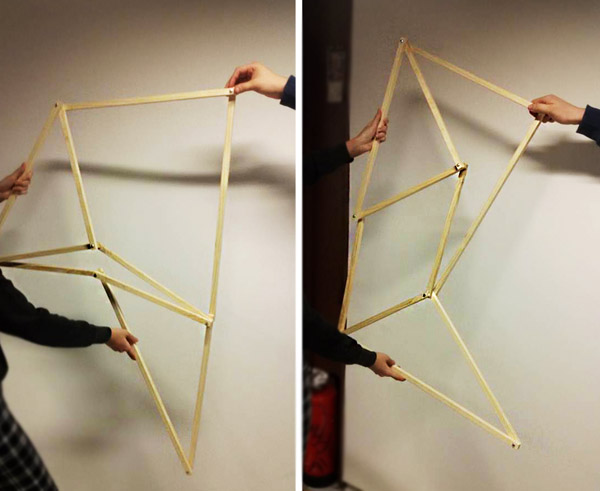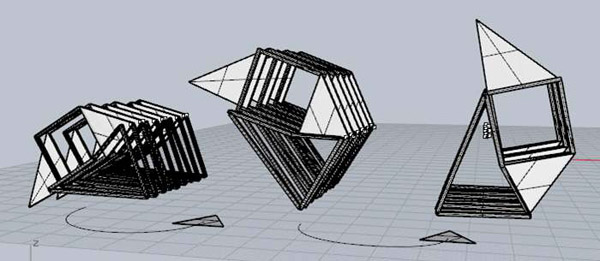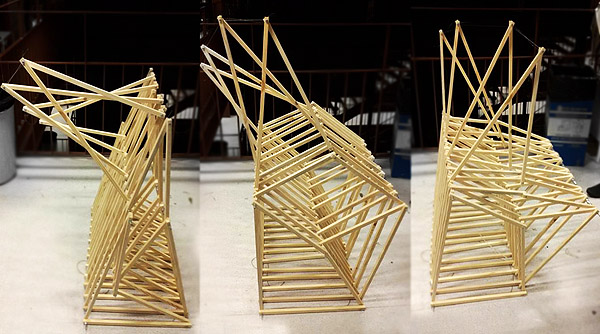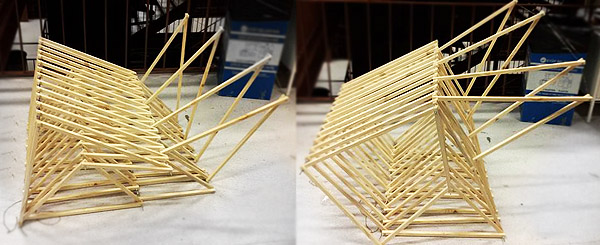Two Plus One
by Tuğrul Yazar | January 21, 2015 16:57
This project named Two Plus One explains itself very well. The students explained their motivation differently from the rest of the studio.
In our Computation-based Basic Design Final Project[1], we are inspired by Theo Jansen’s Strandbeest[2] sculptures, and we wanted to make our arboriform kinetic. First, we made a copy model of the original kinetic sculpture for ourselves in order to observe its shape, parameters, and movement patterns. We realized that the system can also move and generate interesting variations without actually “walking”. So, we decided to study from the smallest components to the whole system and produced the DNA of our structure. We connected several variations of the same structure in order to develop the whole. Our finished model was still moving and every part’s movement was related to the one beside it. This was our approach to the symbiotic formation processes.

Students are Ayris Karayiğit, İmge Yüksel, Hasan Kotan.



The students’ of the Two Plus One project started their design research by getting inspiration from kinetic sculptures. But later on, they developed their designs in a different direction. In the end, they didn’t get a product that was mobile. This design and construction process has trained them to explore the relationships between materials, joint detail, and geometry. They could have taken this work much further. But I am aware that at this stage of their education, I should not raise expectations from students too much. I commend them for their efforts. In another project in the future, they could further advance this system.
- Computation-based Basic Design Final Project: https://www.designcoding.net/category/education/basic-design/
- Strandbeest: https://www.strandbeest.com/
Source URL: https://www.designcoding.net/basic-design-2015-final-project-two-plus-one/